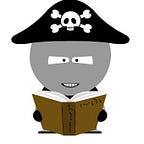Making Fairy Tales “Dark”
Disney’s “Into the Woods” & the question of age-differentiated audiences
It’s clear that Disney’s new film Into the Woods is aimed at fans of musicals, those who loved “L’Miz,” theater majors, and others who memorized the songs when their high school put on Into the Woods and now have the chance to sing along. But is it for kids or grown-ups? More than any other recent release, “Into the Woods” reflects Hollywood’s current muddle about age-differentiated audiences.
For their musical play, which premiered at San Diego’s Old Globe Theater in 1986, Stephen Sondheim and James Lapine seemed to draw primarily on two then popular books about fairy tales. Bruno Bettelheim’s The Uses of Enchantment took these childhood stories seriously, analyzed and linked them in a psychological manner, and won a National Book Award in 1976. Ann Sexton’s Transformations (1971), on the other hand, was a collection of comic poems where she retold the fairy tales in adult and cynical ways. Her poem about “Cinderella,” for example, ends on this note of sarcasm:
Cinderella and the prince
lived, they say, happily ever after,
like two dolls in a museum case
never bothered by diapers or dust,
never arguing over the timing of an egg,
never telling the same story twice,
never getting a middle-aged spread,
their darling smiles pasted on for eternity.
Regular Bobbsey Twins.
That story.
When I saw Into the Woods on stage in Los Angeles in the 1980s, I liked the first act but not the second. Critics agreed. Something changed after the intermission. Act I is a wonderfully clever mash-up that links the fairy tales (primarily “Little Red Riding Hood,” “Rapunzel,” “Jack and the Beanstalk,” and “Cinderella”) and behind which you can sometimes detect knowing nods to Bettelheim. Act II, however, is “dark” and meant to undeceive those who believe in “happy endings”: We learn that loved ones often die, cruelty is rampant, orphans abound, people cheat in their marriages, princes can be jerks, and so forth. In this you can hear Sexton’s voice.
Disney’s new film version of Into the Woods, directed by Rob Marshall, is largely faithful to the eclectic musical by Sondheim and Lapine. Moreover, this Whitman Sampler of fairy tales is brought to you by a sizeable ensemble–including Meryl Streep, Emily Blunt, Johnny Depp, Anna Kendrick, Tracey Ullman, Christine Baranski, James Corden, and Chris Pine. All over the place, the movie’s very fecundity suggests how difficult it is to identify the intended audience for what might be described as “a galloping musical fantasy crossover comedy-drama film.”
It is rated PG. But kids watching the film in my local theater seemed dampened by the mopey second half. They laughed at the cleverness of the first act, as well known storybook characters crossed into each other’s stories and interacted; still, it should be said that when it comes to clever fairy-tale mash-ups, the movie Shrek does it better. But as for the second act’s dreary sharing of existential facts (regarding mortality, adultery, etc.), all in the name of growing-up and becoming undeceived, well, kids aren’t big on Weltschmerz or Schadenfreude. And that’s because, as James Barrie humorously complained in Peter Pan, the young are gay and heartless.
While the original fairy tales are violent and contain the supernatural, they weren’t meant to be categorized as “Gothic”; it’s only in recent years that they have been Twilight-ed and pitched to brooding teens.
But, alas, making kids’ stories “dark” seems de rigeur these days. While the original fairy tales are violent and contain the supernatural, they weren’t meant to be categorized as “Gothic”; it’s only in recent years that they have been Twilight-ed and pitched to brooding teens. But it’s not just fairy tales that have been “darkened.” Consider the difference between Disney’s original “Alice in Wonderland” and Tim Burton’s creepy version. Or Spike Jonze’s film “Where the Wild Things Are” which took Maurice Sendak’s beloved picture book and turned it not into a children’s film but “a film about childhood” by replaying Jonze’s own feelings about growing up as a child of divorce and resulted in a movie full of misunderstandings, hot tears, anger, home-wrecking, and injured recriminations. (I once saw a teacher leading a line of fourth graders down the sidewalk to a theater to see Jonze’s film and, like the Catcher in the Rye, wanted to jump out of the car and save them from what they thought was going to be a film version of their favorite book.)
So, who is “Into the Woods” for? Maybe it’s not for kids, who will be lured by the clever first half and then bludgeoned by maturity in the second. Instead, like many films these days based on children’s stories, this Disney offering seems intended for teen goths and worldly grown-ups — in other words, those partial to moody decrescendo when childhood innocence is “darkened.”
A version of this essay appeared on Maria Tatar’s terrific blog “Breezes from Wonderland.” See my related essay:
Twitter: twitter.com/Jerry_Griswold
Facebook: www.facebook.com/griswold.jerry
